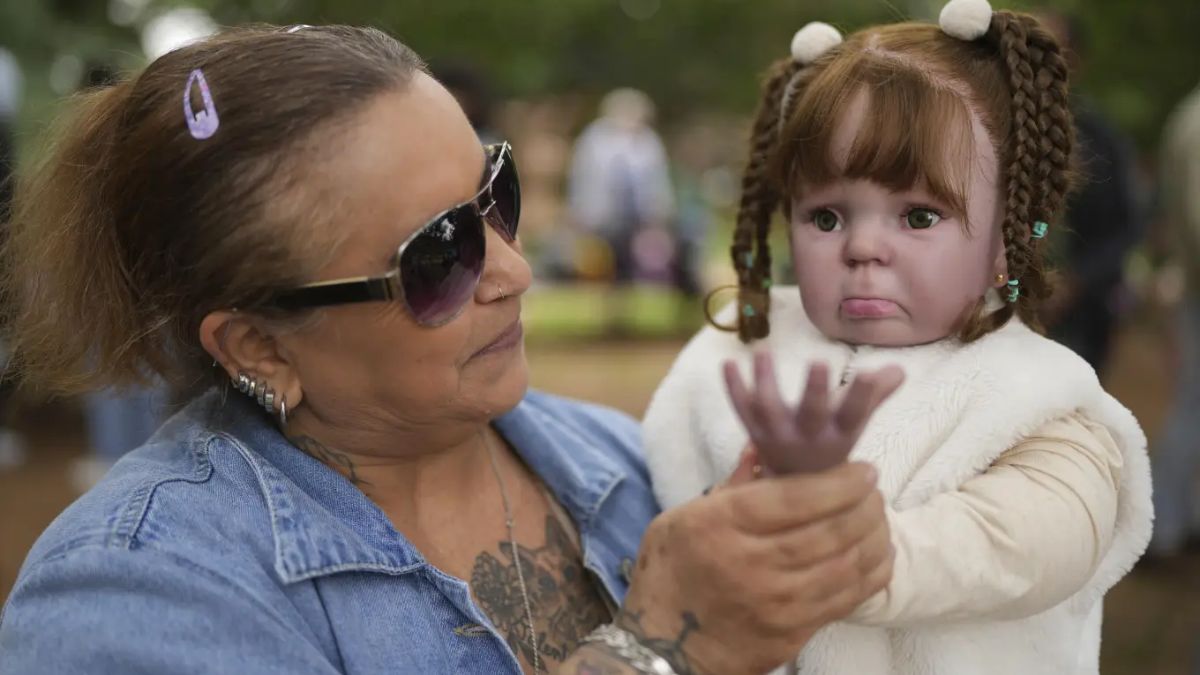After the internet’s love affair with Labubu dolls a few weeks ago, there’s a new obsession grabbing attention: ‘reborn’ dolls.
These hyper-realistic baby dolls, designed to look exactly like real newborns (down to the last vein and wrinkle), have taken Brazil by storm.
Over the past few weeks, videos of people feeding, rocking, and even taking these dolls to hospitals have flooded social media. While some find them fascinating or therapeutic, others are a little creeped out, and can’t look away.
The craze has grown so big that a few Brazilian lawmakers have brought reborn dolls into legislative sessions, sparking debates on whether the trend is harmless art or something that needs regulation.
So what’s really going on with these dolls—and why is everyone talking about them? Here’s a closer look.
What’s the fuss about ‘reborn’ dolls?
What started as a niche hobby among collectors has ballooned into a full-blown viral trend on social media.
According to The New York Times, some of these videos have racked up millions of views—one with over 16 million on TikTok alone. In these clips, women are seen pushing the dolls around in strollers at parks, throwing birthday parties complete with cake and songs, and even simulating nosebleeds or potty training.
One particular video caused a stir after it appeared that someone had taken a reborn doll to a hospital emergency room. The collector later explained it was a role play, but that did not stop widespread reposts portraying it as real.
Juliana Drusz Magri, a 36-year-old HR professional from Curitiba in Paraná state, has been collecting reborn dolls since 2018 and now owns 22 of them. Speaking to The New York Times, she said, “The ones I like the most are the newborns.”
She added, “The world of make-believe is an escape valve for me. And, no, I don’t treat it like a real baby.”
The dolls have also found their way into pop culture. They recently featured in an episode of Vale Tudo, a prime-time telenovela, and even appeared in a trending rap song that jokingly describes a gang walking down the street “kicking reborn dolls.”
Lawmakers take note
According to reports, the Rio de Janeiro city council has passed a bill honouring the talented artists behind the creation of hyper-realistic “reborn" baby dolls. The law now awaits approval from the city’s mayor.
Daniela Baccan, who co-owns a reborn doll shop in Campinas, São Paulo, told media that prices range from 700 reais (around Rs 10,500) to nearly 10,000 reais (over Rs 1.5 lakh), depending on the material and craftsmanship. Most are crafted from silicone or vinyl.
However, not everyone is happy about the reborn dolls. A lawmaker from Amazonas even brought a doll into parliament, urging a ban on dolls from receiving care in the state’s public health system. However, local media reported that health authorities had never recorded any such cases.
Last week, Congresswoman Talíria Petrone criticised her colleagues for focusing on this topic. “Can we focus on what really matters? If someone wants to have a doll, let them. I have two real children and they’re more than enough work,” she said.
Many users have questioned how comforting or therapeutic a doll can truly be. One person commented, “I don’t understand how these are therapeutic… how can a lifeless doll do anything but remind one of loss?”
Another user posted, “They’re very well made. For nurse training or rescue work, yes. But they look so real, it’s creepy.”
With controversy growing, doll shop owners have begun ramping up security. “We’re locking up the store more, adding cameras,” Baccan said. “But at the same time, online demand has increased, and the store is seeing a much higher flow of people.”
‘It’s art, not insanity’
For those who craft and care for reborn dolls, the surge in attention feels like a misdirected backlash. Most collectors are women who say the dolls provide grief therapy or emotional comfort
In an AP video, a group of “reborn mothers” were seen gathering for their 10th annual meetup in São Paulo. They argue that criticism should be aimed at social media influencers who sensationalise the trend, not at those who genuinely find solace in the dolls.
Berenice Maria, a nursing assistant who owns eight reborn dolls, explained, “I love reborns, despite the hate we see out there. I want the right to go out with them … go to the mall, go to the park.”
Artist Larissa Vedolin shared that the backlash has turned aggressive. “I’m receiving daily threats through social media,” she told The Guardian.
Anthropologist Isabela Kalil believes much of the outrage stems from social bias around how women choose to spend their time and money. “Adult men can collect action figures or play video games without raising eyebrows. But adult women are not allowed the luxury of entertainment,” Kalil noted.
Vedolin also defended her work as legitimate art. “These are not toys, but works of art,” she said. But the emotional toll on artists has grown with the online hate.
“I know artists who have been crying all day because they can’t bear to open their social media and be insulted on every video and photo they post. And to me, this reaction boils down to hate – people just want something to hate,” she added.
With input from agencies


)

)
)
)
)
)
)
)
)



